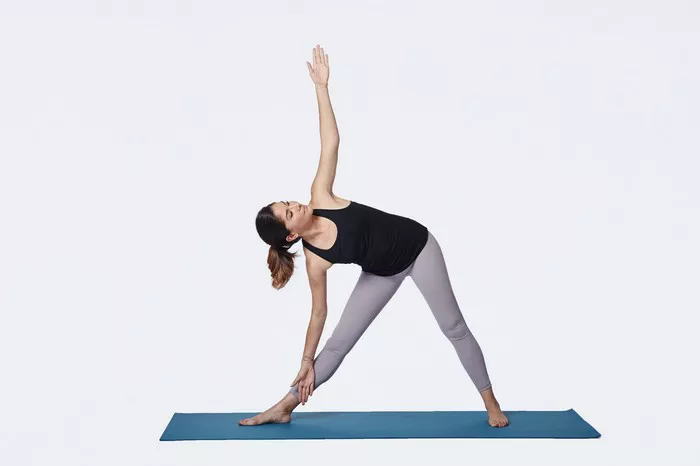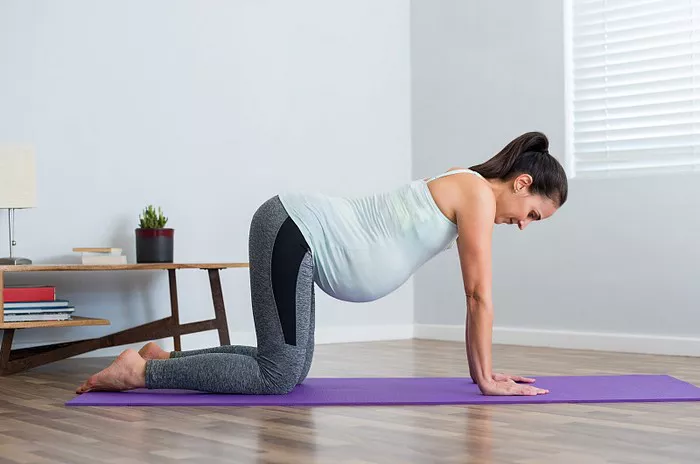Yoga, an ancient practice originating from India, encompasses a myriad of poses, each with its own unique benefits and symbolism. Among these, the Triangle Pose stands out as a fundamental asana that not only strengthens the body but also stimulates the mind and spirit. In this article, we delve into the depths of the Triangle Pose, exploring its origins, physical and mental benefits, variations, step-by-step instructions, as well as precautions and contraindications.
Origins and Symbolism
The Triangle Pose, or Trikonasana in Sanskrit, derives its name from the shape it forms when practiced correctly—a triangle. Like many yoga poses, its origins are deeply rooted in both physical and spiritual aspects. Historically, Trikonasana finds its roots in ancient yogic texts, such as the Yoga Sutras of Patanjali and the Hatha Yoga Pradipika.
Symbolically, the Triangle Pose embodies the trinity of mind, body, and spirit, aligning them harmoniously. It represents stability, balance, and expansion—a fusion of groundedness and openness. The triangle itself symbolizes the three Gunas in Hindu philosophy: Sattva (purity), Rajas (activity), and Tamas (inertia). Through the practice of Trikonasana, practitioners aim to cultivate a balance between these qualities, fostering inner equilibrium and tranquility.
Physical and Mental Benefits
The benefits of the Triangle Pose extend beyond the physical realm, encompassing mental and emotional well-being as well. Physically, Trikonasana engages multiple muscle groups, including the legs, core, shoulders, and spine. It enhances flexibility in the hips, hamstrings, and groin while strengthening the thighs and calves. Moreover, the elongation of the spine in this pose improves posture and alleviates back pain.
Mentally, practicing Trikonasana promotes mental clarity and concentration. The deep, steady breaths required during the pose calm the mind, reducing stress and anxiety. Additionally, the sense of stability and grounding fostered by the pose instills confidence and inner strength, aiding in emotional resilience.
Variations and Modifications
While the traditional Triangle Pose offers a multitude of benefits, variations and modifications cater to individuals with different abilities and body types. Variations of Trikonasana include:
1. Revolved Triangle Pose (Parivrtta Trikonasana): In this variation, the torso twists towards the sky, deepening the stretch and enhancing spinal mobility.
2. Extended Triangle Pose (Utthita Trikonasana): This variation involves reaching the top arm overhead, elongating the side body and intensifying the stretch.
3. Supported Triangle Pose: Using props such as blocks or a wall, practitioners can modify the pose to accommodate limited flexibility or balance issues, providing support and stability.
Modifications for beginners or individuals with physical limitations may include bending the front knee slightly, using a wider stance, or placing the bottom hand on a block for added support. These modifications ensure accessibility and safety while still reaping the benefits of the pose.
Step-by-Step Instructions
To practice the Triangle Pose effectively, follow these step-by-step instructions:
- Begin in a standing position (Tadasana), feet hip-width apart, and arms by your sides.
- Step your feet wide apart, about 3-4 feet, with toes pointing forward.
- Extend your arms parallel to the floor, palms facing down, creating a straight line from fingertip to fingertip.
- Shift your left foot slightly inwards and rotate your right foot 90 degrees to the right, ensuring that the heel aligns with the arch of the left foot.
- Inhale deeply and engage your core.
- Exhale as you extend your torso to the right, hinging at the hips, and reach your right hand towards the right shin, ankle, or the floor.
- Extend your left arm towards the sky, palm facing forward, and gaze up at your left thumb.
- Keep both legs straight and strong, pressing into the outer edge of the left foot while grounding through the right heel.
- Hold the pose for 30 seconds to 1 minute, maintaining steady breaths.
- To release, inhale and press into the feet to rise back up to standing. Repeat on the opposite side.
Precautions and Contraindications
While the Triangle Pose offers numerous benefits, it is essential to practice with caution, especially if you have certain health conditions or injuries. Precautions and contraindications for Trikonasana include:
- Avoid practicing if you have low blood pressure, dizziness, or vertigo.
- Individuals with neck injuries should keep their gaze forward rather than looking up.
- If you have a shoulder injury, you can modify the pose by placing the top hand on the hip instead of reaching overhead.
- Pregnant women should practice with caution, avoiding deep twists and ensuring proper alignment and support.
- If you experience any discomfort or pain during the pose, gently come out of it and consult with a qualified yoga instructor or healthcare professional.
Conclusion
In conclusion, the Triangle Pose serves as a foundational yoga asana that embodies the union of mind, body, and spirit. Its rich symbolism, coupled with its physical and mental benefits, makes it a valuable addition to any yoga practice. By exploring variations, practicing with mindfulness, and honoring individual limitations, practitioners can unlock the transformative power of Trikonasana on and off the mat.





















